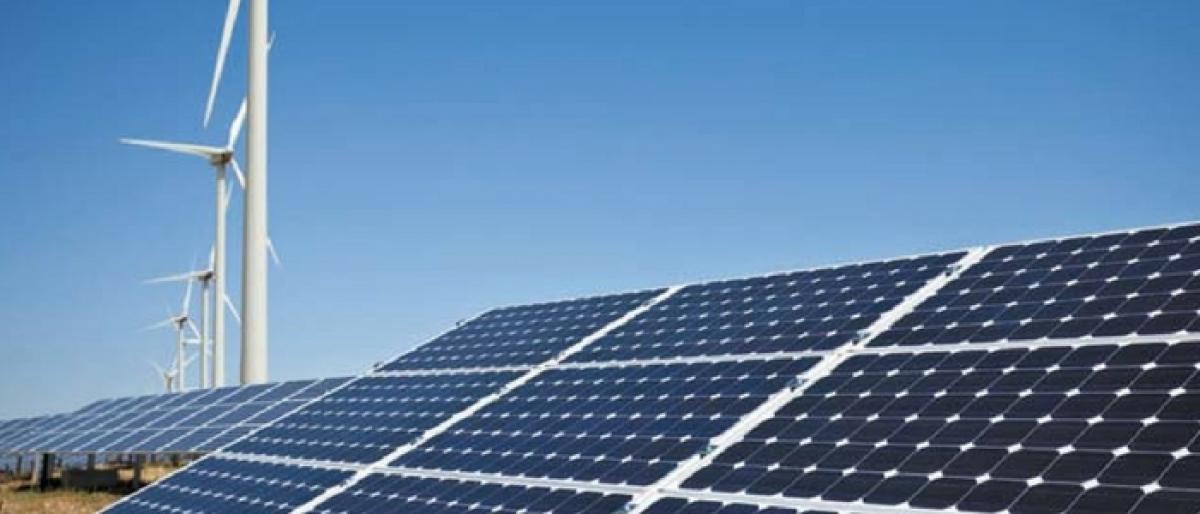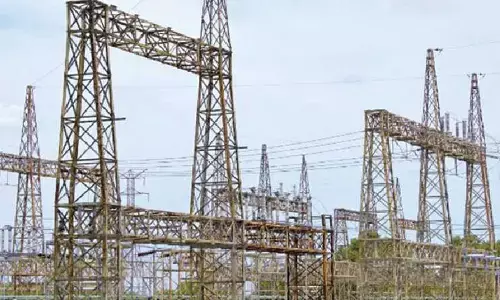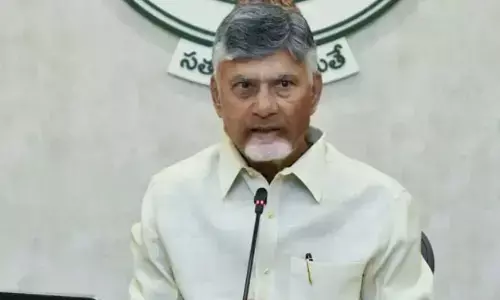An insight into India’s Energy Transformation

India has gained global attention for its ambitious clean energy targets. India is now expected to play a major role in global energy transformation, by maintaining its own pledges, holding to account the developed world and thus, building global confidence.
India has gained global attention for its ambitious clean energy targets. India is now expected to play a major role in global energy transformation, by maintaining its own pledges, holding to account the developed world and thus, building global confidence.
India has become a frontrunner in energy transformation
- India added more renewable energy (RE) capacity than conventional generation capacity in 2016-17.
- RE tariff in the country dropped to a level that is cost competitive with coal-fired generation.
- According to EY’s renewable energy country attractiveness index, India pipped the US to become the second most attractive country for RE investments.
- According to government data, the share of renewable energy in the total installed capacity was 13% at the end of financial year 2016. But it is expected to increase significantly in the coming years, with solar a big driver.
Ambitious targets
- In 2014, the domestic RE target was revised to 175 GW of installed capacity by 2022.
- In 2015, in its Intended Nationally Determined Contributions (INDC), India made a global pledge to achieve 40% cumulative installed capacity from fossil-fuel-free resources by 2030.
- The country already has 33% fossil-fuel-free generation capacity, and as predicted by Central Electricity Authority, it may achieve the INDC target sooner.
Ashok Chawla Committee on Natural Resources
- Creation of national database of natural resources
- Allocation of natural resources, if possible, through e-auction
- Measures for benefit of stakeholders in mineral rich areas
Need for conserving Conventional Energy Resources
- Are limited in supply and cannot be renewed easily.
- Due to population explosion, modernization and industrialization the demand for energy resources is increasing day by day
- To control energy crisis there is need to conserve conventional energy resources.
- There is also an eminent need to explore alternative sources of energy
Energy Crisis
- A situation in which resources are less than the demand
- In the past few decades due to high demand, there is shortage of energy resources, which has created energy crisis.
- Major causes for Energy Crisis:
- Rapid Industrialization
- Over Population
- Transfer losses
- Rise in oil prices
- Problems in Middle east
- Wastage of energy resources.
Coal
- Quality of coal is determined by its carbon content
- Major problems of Indian Coal -
- Low Carbon content
- High Ash content
- Low Calorific Value
- Major coal producing areas in India Jharkhand > Odisha > Chhattisgarh > West Bengal
- Chhota Nagpur Region Hub of 90 % of Indian minerals (esp.in Coal & Iron Ruhr of India)
| Major types of Coals |
Anthracite
| Bituminous
|
Lignite
| Peat
|
Coke
- Formed by destructive distillation of coke
- Heating of coal in the absence of oxygen to burn of volatile gases
- High in carbon content
Petroleum / Mineral oil
- Found in sedimentary rocks of marine origin
- Formed by decomposition of tiny marine creatures, plants & vegetation under mud, silt & sand
- Over the years, it underwent chemical changes to form crude oil & natural gas under the action of heat & pressure
- 20 % of India’s crude oil & gas demand is produced domestically & 80 % is imported
- Jamnagar Refineries of Reliance industries is world largest refinery complex
Natural Gas
Mainly contains methane & found in association with mineral oil ( 75 % lies in Bombay high & Bassein oil fields) Largest share of NG is as follows -
40 % Production of chemical fertilizers
30 % Power generation
10 % LPG (Cooking Gas)
Conventional sources Shale gas, Coal bed methane, Methane Hydrates, Tight sandstones
Bio-Fuels
- Fuel derived from Non fossil plants
- In India, mainly centers around cultivation & processing of Jatropha plant seeds, used in production of Bio – Diesel
- Encouraged only on wasteland / government / forest land
- Not allowed on fertile land
- To produce ethanol from sugarcane (Bio-ethanol)
- National Bio-fuel Policy – Targets minimum 20 % biofuel blending (both bio-diesel and bio-ethanol) across the country by 2017
Electricity in India Thermal > Hydro > Wind > Nuclear
Thermal Energy
- 67 % of total energy production
- Generated by using fossil fuels (Coal, Petroleum, Natural gas)
- No Geological conditions required
- Limited reserves, Rising demands (cost) & non – ecofriendly
- Largest Producer → Maharashtra
- To boost Thermal power production gov. has promoted Ultra Mega Power Projects (4000 MW & above)
Hydroelectricity
- 18 % of total energy production
- Eco-friendly, Clean & Renewable
- Small hydel power projects < 25 MW
- Are counted under New renewable energy sources
- Largest Producer Andhra Pradesh
- Central electricity authority (CEC) has estimated Hydel power potential of 84000 MW at 60 % load factor from 39000 MW at present
Nuclear Energy
- 26 % of total energy production
- Energy obtained from atomic minerals viz. Uranium, Thorium, zircon, beryllium
- Provide colossal energy through a small quantity of substance
- Thorium Found as monazite sand in lakes & sea beds
- Thorium AP > TN > Kerala > Orissa constitutes 30 % of world reserves
- Largest Producer Tamil Nadu
- Very economical; does not produce green-house gases that pollute atmosphere
Wind Energy
- Non-conventional Renewable source of energy
- 5th largest installed wind power capacity in the world
- Largest Producer Tamil Nadu
- High cost as compared to the efficiency of power generated
- Nagercoil (TN) and Jaisalmer (Rajasthan) are well known for effective use of wind energy in the country
Solar Energy
- Non-conventional Renewable source of energy
- Thermal + Photovoltaic Sunlight to energy
- High cost as compared to the efficiency of power generated
- India plans to add 20000 MW of solar energy by 2022 under Jawahar Nehru National Solar Mission
- The largest solar plant of India is located at Madhavpur, near Bhuj, where solar energy is used to sterilise milk cans.
Tidal Energy
- Non-conventional Renewable source of energy
- Oceanic tides can be used to generate electricity.
- Floodgate dams are built across inlets
- During high tide water flows into the inlet and gets trapped when the gate is closed.
- After the tide falls outside the flood gate, the water retained by the floodgate flows back to the sea via a pipe that carries it through a power-generating turbine.
- In India, the Gulf of Kutch, provides ideal conditions for utilising tidal energy.
- Experimental plant (150 kw) at Vizinjam (Thiruvananthapuram) & 900 mw at Kutch.
Geo Thermal Energy
- Refers to the heat and electricity produced by using the heat from the interior of the Earth
- Exists because, the Earth grows progressively hotter with increasing depth
- Groundwater in such areas absorbs heat from the rocks and becomes hot.
- It is so hot that when it rises to the earth’s surface, it turns into steam.
- This steam is used to drive turbines and generate electricity.
| Energy Resources of India |
| Conventional resources of Energy | The resources which are widely used and constitute the major source of energy Examples → Coal, Oil, Natural gas, Wood etc. imited, Non-renewable, Costly, Cause Pollution & Exhaustible |
| Non-conventional resources | Solar Energy, Wind Energy, Tidal Energy, Geothermal Energy, OTEC (Ocean thermal energy conversion) etc. Renewable, Cheap, Pollution free & Inexhaustible |
| Renewable sources of Energy | Solar Energy, Wind Energy, Tidal Energy, Fish, Trees etc. |
| Non – Renewable sources of Energy | Fossils (Coal, Gas), Minerals, Nuclear Power etc. |
| Biotic resources | Which have life >> Forests, Crops, Animals, Coal & Mineral oil |
| Abiotic resources | Land, Water, Minerals |

















